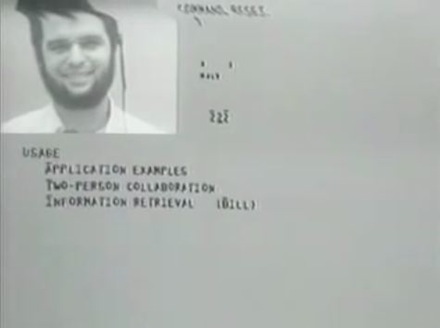
Doug Engelbart died today. His work has always been very difficult for writers to interpret and explain.
Technology writers, in particular, tend to miss the point miserably, because they see everything as a technology problem. Engelbart devoted his life to a human problem, with technology falling out as part of a solution. When I read tech writers' interviews with Engelbart, I imagine these writers interviewing George Orwell, asking in-depth probing questions about his typewriter.
Here's the most facile interpretation of Engelbart, splendidly exhibited by this New York Times headline:
Douglas C. Engelbart, Inventor of the Computer Mouse, Dies at 88
This is as if you found the person who invented writing, and credited them for inventing the pencil. (This analogy may be more apt than any of us are comfortable with.)
Then there's the shopping list interpretation:
His system, called NLS, showed actual instances of, or precursors to, hypertext, shared screen collaboration, multiple windows, on-screen video teleconferencing, and the mouse as an input device.
These are not true statements.
* * *
Engelbart had an intent, a goal, a mission. He stated it clearly and in depth. He intended to augment human intellect. He intended to boost collective intelligence and enable knowledge workers to think in powerful new ways, to collectively solve urgent global problems.
The problem with saying that Engelbart "invented hypertext", or "invented video conferencing", is that you are attempting to make sense of the past using references to the present. "Hypertext" is a word that has a particular meaning for us today. By saying that Engelbart invented hypertext, you ascribe that meaning to Engelbart's work.
Almost any time you interpret the past as "the present, but cruder", you end up missing the point. But in the case of Engelbart, you miss the point in spectacular fashion.
Our hypertext is not the same as Engelbart's hypertext, because it does not serve the same purpose. Our video conferencing is not the same as Engelbart's video conferencing, because it does not serve the same purpose. They may look similar superficially, but they have different meanings. They are homophones, if you will.
Here's an example.
* * *

Say you bring up his 1968 demo on YouTube and watch a bit. At one point, the face of a remote collaborator, Bill Paxton, appears on screen, and Engelbart and Paxton have a conversation.
"Ah!", you say. "That's like Skype!"
Then, Engelbart and Paxton start simultaneously working with the document on the screen.
"Ah!", you say. "That's like screen sharing!"
No. It is not like screen sharing at all.
If you look closer, you'll notice that there are two individual mouse pointers. Engelbart and Paxton are each controlling their own pointer.
"Okay," you say, "so they have separate mouse pointers, and when we screen share today, we have to fight over a single pointer. That's a trivial detail; it's still basically the same thing."
No. It is not the same thing. At all. It misses the intent of the design, and for a research system, the intent matters most.
Engelbart's vision, from the beginning, was collaborative. His vision was people working together in a shared intellectual space. His entire system was designed around that intent.
From that perspective, separate pointers weren't a feature so much as a symptom. It was the only design that could have made any sense. It just fell out. The collaborators both have to point at information on the screen, in the same way that they would both point at information on a chalkboard. Obviously they need their own pointers.
Likewise, for every aspect of Engelbart's system. The entire system was designed around a clear intent.
Our screen sharing, on the other hand, is a bolted-on hack that doesn't alter the single-user design of our present computers. Our computers are fundamentally designed with a single-user assumption through-and-through, and simply mirroring a display remotely doesn't magically transform them into collaborative environments.
If you attempt to make sense of Engelbart's design by drawing correspondences to our present-day systems, you will miss the point, because our present-day systems do not embody Engelbart's intent. Engelbart hated our present-day systems.
* * *
If you truly want to understand NLS, you have to forget today. Forget everything you think you know about computers. Forget that you think you know what a computer is. Go back to 1962. And then read his intent.
The least important question you can ask about Engelbart is, "What did he build?" By asking that question, you put yourself in a position to admire him, to stand in awe of his achievements, to worship him as a hero. But worship isn't useful to anyone. Not you, not him.
The most important question you can ask about Engelbart is, "What world was he trying to create?" By asking that question, you put yourself in a position to create that world yourself.